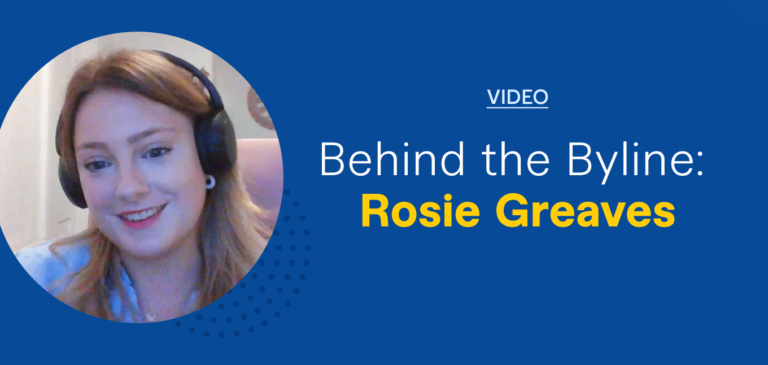In ancient Rome, the Triumvirate balanced power for more effective governmental management.
Well, that was the goal…
For any professional who has worked inside an agency, he or she has likely witnessed a similar power struggle between the art director and copywriters. In the last several years, this two-way relationship has expanded into a “triumvirate,” which now includes a marketing technologist.
These three professionals need to work together to ensure their campaigns are well built, target the right audiences, and can be tracked and analyzed, all while providing the best bang for the buck.
In this article, we will briefly discuss the evolution of the creative marketing agency triumvirate, how the three can best join forces for the best outcomes, and some key martech tools to use.
The evolution of the creative agency triumvirate
Before the digital age, traditional creative agencies had two primary roles: the art director (ideation and imagery) and a copywriter (words). The two worked closely together on creative direction and final output. Traditional creative agencies typically followed linear production models, working on only a few pieces of content at a time. However, through the decades, it became clear that the traditional linear content production process was time-consuming and expensive.
As the digital production landscape came into view, the introduction of technology also shaped the buyer journey and behavior patterns. As a result, this had a direct impact on how creative agencies produce content, how much content, how they market that content and get it in front of the right target audiences. This quickly became a highly complex and seemingly impossible feat for agencies, especially since most art directors and copywriters were not technologists or strategists. Furthermore, many creative agencies became overwhelmed with technology. They spent more time trying to learn and implement technology than actually creating content.
Enter the marketing technologist…
The rise of the marketing technologist
Fast forward to present day, and most, if not all, marketing agencies have made the shift to digital. In fact, according to an article published by The Harvard Business Review, marketing is becoming the most technology-dependent business function. As a result, the majority of agencies have evolved from the traditional two-person agency model to a “triumvirate,” which includes the art director, copywriter, and now a marketing technologist.
The role of the marketing technologist includes responsibilities such as:
- Managing the digital transformation. As companies, especially creative agencies, recognize the need to move internal processes and external-facing campaigns to digital, the marketing technologist plays a central role in ensuring the efficacy of this transition.
- Manages the martech stack. To ensure the agency has the right tools that are unique and not overly redundant (creating more work), the technologist closely oversees the martech stack.
- Collaborate with the art director and copywriter. Teamlancing requires close collaboration between all creative experts and the marketing technologist works closely with others while also recommending the technology that can assist better collaboration.
- Tell a story with data. Creative agencies often manage data from client campaigns, and the technologist must have a firm understanding of the data and know how to use it to tell a story and improve future campaigns.
The marketing technologist, also known as CMT, is a marketing executive role that sits at the center of digital transformation. This role serves as part strategist, technology leader, change agents, creative director, and a liaison between marketing and IT. The marketing technologist’s goal is to align marketing technology with overarching, high-level business goals, set the marketing vision, and also assist in developing new digital business models to accelerate the company’s competitive advantage.
The marketing technologist works with the art director and copywriter on the specific mediums in which to create and publish content, how to pinpoint and target the right audiences, and how to accurately track and analyze crucial data related to KPIs, metrics, and high-level OKRs.
The marketing technologist also works with the art director and copywriters to collect and analyze data to help them understand content conversion rates, how to create content that “speaks” to different audiences, and which content pieces are resonating best with those audiences, and more.
Creative agency triumvirate collaboration
Taking an agile approach to content creation
In an effort to keep up with topic trends, news, and shifts in the market, many creative agencies now take an agile approach to content creation. Implementing agile workflows helps to increase the velocity and productivity of content creation activities, which allows agencies to deliver more content to more clients and brands faster and also more consistently.
In addition, the agile methodology is iterative and encourages creativity. It allows agencies to constantly create and experiment with new ideas, allowing the agency to deliver while simultaneously learning from their experiments and increase understanding as the process grows and scales.
How the triumvirate fits into the teamlancing model
The triumvirate also fits into teamlancing models. In fact, the role of the marketing technologist fulfills that “specialized” skill set that often rounds out most teamlance models.
Creative agencies can also leverage their triumvirate models and “pitch” the agency by focusing on a specialized skill set, and how certain aspects of that skillset can add value to a client’s project and brand.
For example, the triumvirate model can be “pitched” to prospective clients in such a way that allows the client access to an art director, team of copywriters, and a marketing technologist. Clients see the benefits of having access to all the right creative resources to help them create content without the added cost of time, materials, and resources of hiring or managing in-house.
In addition to having a solid triumvirate structure in place, creative teamlancing agencies can provide brands with deliverables in a matter of days rather than weeks or months, and without all the risks or overhead.
Martech stack access
Creative agency triumvirate or freelance teams can also leverage various online tools to evaluate what martech clients may already be using, or even supplement their martech stacks with tools that agencies use. This provides both agency and client teams with access to more tools and is also a cost-effective approach to leveraging the right tools for the project.
Additionally, with the majority of companies, businesses, and teams now working remotely, leveraging the right tools that enable communication is more important than ever. Not only does this help teams work together more efficiently — regardless of where they physically are located in the world — but it also drives more value to clients.
The prevalence of technology: optimizing the marketing tech stack
Technology has also come a long way in supporting various content creation platforms. With the many platforms available today, marketers can produce more content faster, cheaper, and at scale.
In the last decade, many creative agencies have adopted multiple tools and technologies into their martech stacks in order to build the technology environment they need to support their initiatives and goals. In fact, at the time of this writing, the technology landscape today has over 8,000 tools.
However, with the ever-evolving martech landscape and the thousands of SaaS and tech solutions available on the market today — not to mention the vast array of tools — it’s easy to see why marketers, agencies, and businesses get overwhelmed. As a result, many end up falling victim to “shiny object syndrome.” Additionally, by introducing too many tools, this makes processes and projects more complex.
Some of the categories of martech tools the marketing technologist often manages include:
- Advertising management
- Customer experience
- Content management
- Marketing collaboration
- Social media management
- Data warehousing
- CRM/sales
Marketers often select tools simply for the availability of shiny, new features, not necessarily for successful marketing technology planning and implementation to meet their needs. A marketing technologist can help optimize marketing tech stacks to avoid tool overlap and deduplication. It also helps keep databases clean and accurate, better leverage team alignment and cohesion, and optimize software budgets.
6 tools to empower the creative agency triumvirate
There are several must-have tools that creative agency triumvirate teams can use to collaborate more efficiently and work together toward a common goal.
1. ContentStudio
ContentStudio is a great tool for researching top trends and creating viral content. In today’s fast-paced market, it is crucial for creative agencies to use tools that enable them to increase the odds of creating viral content dramatically.
ContentStudio supports the entire triumvirate. It is a great research tool for creative and art directors as well as copywriters, and it also provides data on content that has already gone viral. It also allows users to research data related to keywords, trending topics, and also what other influencers and competitors are up to, which is a marketing technologist’s dream come true.
Once teams see what content is viral, it can help spark creative ideas for coming up with new content to create and share.
2. Ahrefs
Ahrefs is a highly robust keyword research tool, which is a must-have for any creative agency triumvirate. In fact, a good marketing technologist will immediately be able to recommend a keyword research tool and ensure one is in their ever-growing tech stack.
Ahrefs is a popular keyword research tool that allows users to research keywords to use for organic search, the keywords they currently rank for, competitors’ keywords, and which keywords to leverage in the future. Using a tool to identify keywords that are valuable to any business or agency, and can help ensure creative agencies are maximizing the effectiveness of their content.
3. Slack
Slack is one of the easiest and best ways to keep teams connected, especially in a day and age when most teams are distributed or remote. As a result, more and more agencies and businesses are adopting Slack for daily communication and collaboration. Additionally, there are more helpful and valuable functionalities available, such as creating multiple channels; sending, sharing, and “pinning” files to specific channels to make them more easily accessible; and even third-party integrations with other apps and tools.
For example, creative agency teams can set up a Slack channel per client or project, invite team members, share relevant files and assets, and even integrate a third-party project management tool to help track key tasks, projects, and milestone due dates.
Slack is also free to download and use (for up to 10,000 messages).
4. Microsoft Teams
Microsoft has come along way to compete with the many collaborative tools used by businesses across the globe today. A tool in the Microsoft 365 suite, Microsoft Teams is an interactive chat feature that allows teams to communicate with one another via instant messaging, video conferencing, screen sharing, file sharing, and more.
Microsoft Teams allows creative directors, copywriters, and marketing technologists to meet and collaborate effectively. With the ease of chatting, setting up meetings, and file sharing, triumvirate teams can stay up-to-date on projects and priorities all in a shared workspace that hosts collaboration, chats, and calls all in a centralized location — and in real-time.
5. Whatagraph
The creative agency triumvirate can’t very well be a functional triumvirate without a key tool: data and analytics that show results. Whatagraph is a tool specifically designed for reporting. Whether teams need reporting for internal purposes or for clients, accurate data and reports are essential to success. And with a data and analytics tool built by marketers for marketers, Whatagraph has the power to do both.
Whatagraph allows marketers to provide reports with the necessary KPIs and metrics that clients and executives want to see, including the most effective marketing mediums and channels. Users can also schedule automated reporting delivery, either via email or on-screen. Furthermore, Whatagraph boasts saving agencies an average of one to five hours per week (per client) on collecting data and reporting.
6. Loom
Any marketer knows that video is in today. Many companies and businesses rely on marketers and creative agencies with a team of content creators to help build a cohesive and effective video marketing plan. Loom is a super-easy and free tool to use for recording videos. Loom allows users to quickly record screencasts, videos, and more.
In addition to recording great videos, Loom can also be used as a collaborative tool to record and share instructional videos that explain how to perform a task, or provide feedback to a team member. Loom also has a browser extension available that users can download and install, allowing them to record a video in seconds.
How the creative agency triumvirate can take action
Creative agency triumvirates don’t have to subject themselves to “power struggles.” By taking action in securing the right tools they need to collaborate and do their jobs easily and more effectively, creative agencies are in a better position to further expand their capabilities and productivity.
Taking the time to audit your current tech stack and adopt the right tools to fit your creative agency’s needs will help you to maximize your martech stacks well as allow your software budget to go that much further.






